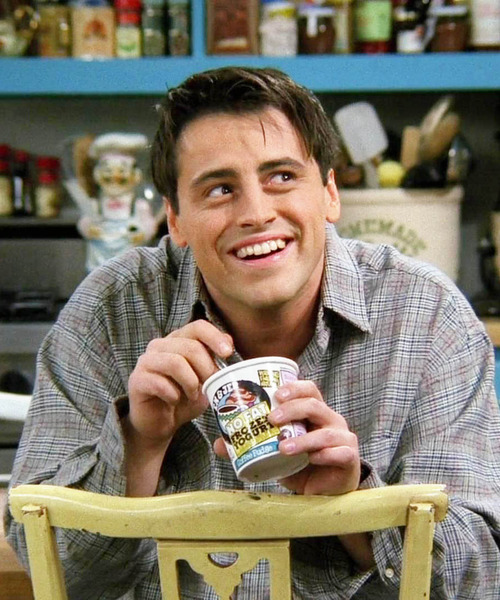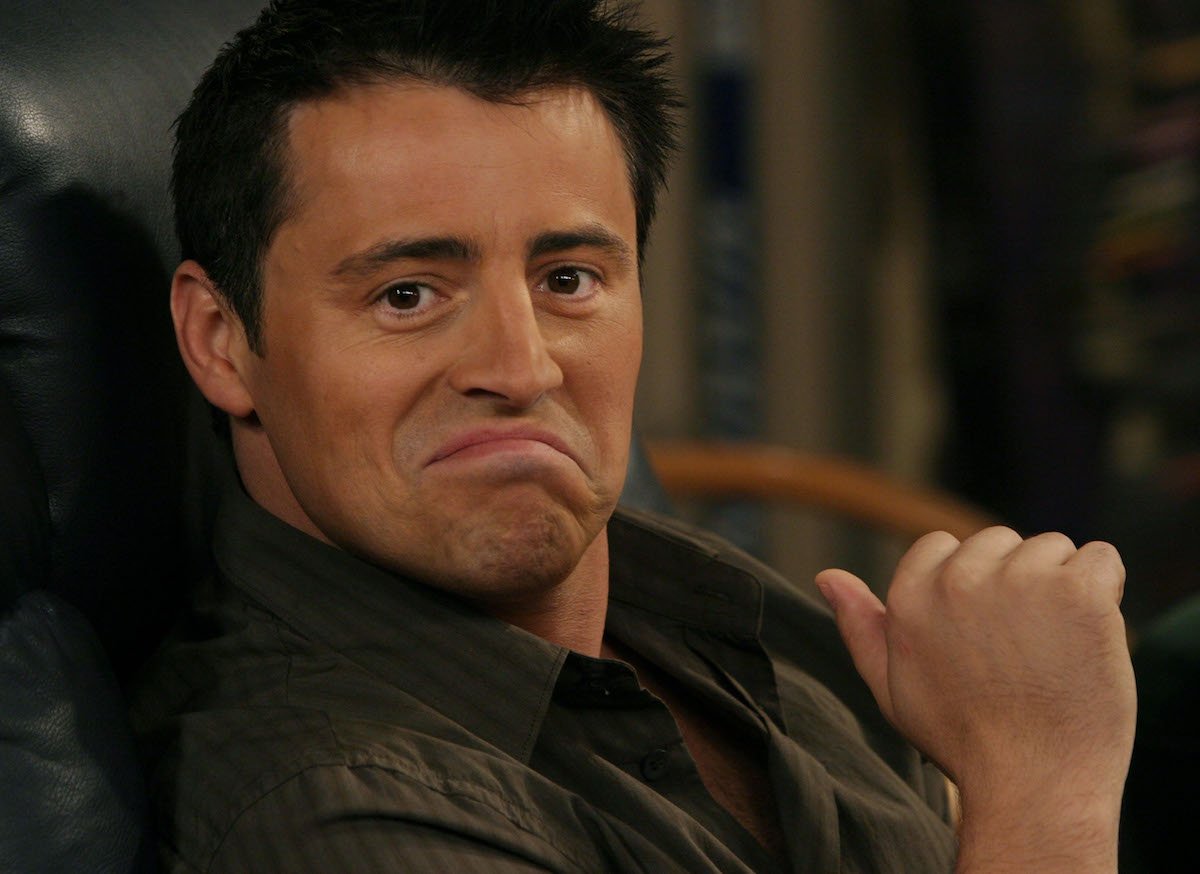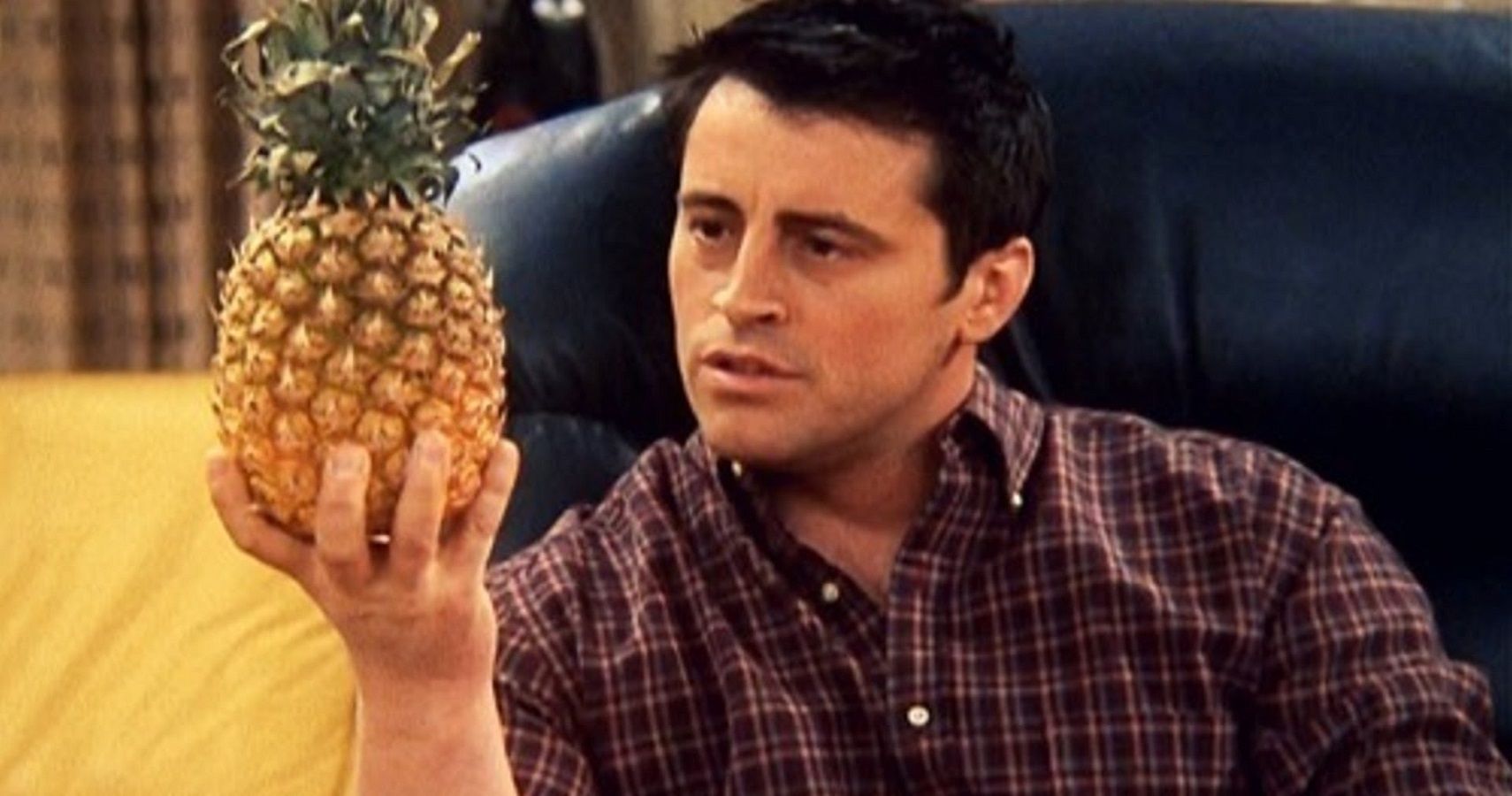For anyone who spent a fair bit of time with a certain group of friends living in New York, the name Joey probably brings a smile. That character, Joey Tribbiani, a lovable, if somewhat simple, actor from the popular sitcom, eventually got his very own show. This spin-off, simply called Joey, picked up right after the original series wrapped up, following his move to the sunny, you know, Los Angeles to really go after his acting dreams. It featured a familiar face, Matt LeBlanc, back in the role, joined by a cast that included Andrea Anders, Paulo Costanzo, and Jennifer Coolidge, creating a fresh, yet connected, comedic world for fans to explore.
Yet, for a long stretch, finding this particular show felt a bit like looking for a needle in a haystack. It wasn't readily available on streaming platforms, which was, quite frankly, a little puzzling given its ties to such a massive cultural phenomenon. This situation, in a way, often brings up conversations among television producers about the wisdom of creating follow-up shows or reunions. They often worry about somehow, you know, messing with the good feelings people have for the original. The tale of the Joey show, in some respects, presents a rather compelling example of why those worries exist.
But things, it seems, have changed a bit recently. There's been a quiet, yet significant, development that has brought this sitcom back into the light for a new generation of watchers, or for those who just want to revisit it. Full episodes are now making their way onto the official YouTube channel dedicated to the original show, offering a chance to see Joey Tribbiani's continued adventures. This fresh appearance online has, perhaps, sparked a renewed interest and a fresh look at a show that, for a while, was more or less out of sight.
Table of Contents
- The Story of Joey - A Sitcom's Journey
- Key Details of the Show
- Why Did Joey Get Its Own Show, Anyway?
- The Cautionary Tale - What Went Wrong for Joey Gentile's Show?
- Finding Joey's Episodes - Where Can You Watch Them Now?
- The YouTube Revival - A New Look for Joey Gentile?
- Looking Back at the Legacy
- The Future of Joey's Presence
The Story of Joey - A Sitcom's Journey
The sitcom known as Joey began its life as a direct follow-up to one of television's most beloved comedies. It was, you know, an American sitcom that brought Matt LeBlanc back to play his well-known character, Joey Tribbiani, straight from the original series. The idea was to continue the story of this particular character as he moved away from his old friends and sought out a new chapter in his acting profession. The show made its debut on NBC, a big television network, and it first appeared on screens on September 9, 2004. It later returned on March 7, 2006, with a new time slot, trying to find its footing and connect with its audience.
The creation of the show was handled by Kevin S., which suggests a creative vision behind its development. The core concept revolved around Joey Tribbiani catching what was hoped to be his big break in Hollywood. This meant leaving behind the familiar apartment and the coffee shop, moving to a new city, and, you know, dealing with new people and situations. The series aimed to maintain the lighthearted, humorous spirit of its predecessor while giving its lead character room to grow, or at least, to try and grow, in a fresh setting. It was a pretty big gamble, to be honest, trying to carry on such a popular story with just one piece of the original puzzle.
The series brought in a fresh set of supporting characters to interact with Joey, helping to build this new world around him. Andrea Anders took on a significant role, adding a new dynamic to his life. Paulo Costanzo also joined the group, contributing to the comedic situations that Joey found himself in. And, of course, the addition of Jennifer Coolidge brought her distinct comedic flair, which, you know, really helped to round out the ensemble. These performers were tasked with creating a believable and amusing support system for Joey as he navigated the ups and downs of his acting pursuit in a new place, making the show feel, in a way, like its own distinct entity.
Key Details of the Show
Here are some of the basic facts about the television program that centered around Joey Tribbiani, providing a quick overview of its origins and key players:
| Starring | Matt LeBlanc, Andrea Anders, Paulo Costanzo, Jennifer Coolidge |
| Main Character | Joey Tribbiani (reprising his role from Friends) |
| Original Network | NBC |
| Premiere Date | September 9, 2004 |
| Return Date (New Timeslot) | March 7, 2006 |
| Creator | Kevin S. |
| Episodes Available on YouTube | Two new full episodes every Tuesday |
This table, you know, offers a quick snapshot of the show's core information. It really highlights the central role of Matt LeBlanc and the new faces that joined him. The details about its network and premiere dates give a sense of its original broadcast life. It's interesting, too, to see the mention of the YouTube uploads, which, you know, points to its more recent availability. This information, basically, helps to set the scene for understanding the journey of the show and its place in television history.
Why Did Joey Get Its Own Show, Anyway?
It's a fair question, isn't it? After a show as incredibly popular as Friends concluded its run, the idea of spinning off just one character might seem a bit, well, risky. But Joey Tribbiani was, arguably, a character who had truly captured the hearts of many viewers. His simple charm, his loyalty, and his enduring pursuit of acting gigs made him a very relatable figure. The decision to give him his own series, then, was probably rooted in the hope that his individual appeal could carry a new program, building on the affection people already felt for him. It was a chance, you know, to see what happened next for this particular person, without the entire group.
The thinking behind it was, perhaps, that Joey's story still had plenty of life in it. He was always talking about his acting career, and moving to Los Angeles felt like a natural, logical step for his character arc. It offered a fresh setting, new supporting characters, and a different set of challenges for him to face. This allowed the creators to explore new comedic situations and, you know, develop his personality further, outside the familiar apartment in New York. It was, in some respects, a way to keep a piece of the beloved universe alive for fans who weren't quite ready to say goodbye to everything.
Moreover, having Matt LeBlanc reprise his role was, obviously, a huge draw. He was the face of Joey Tribbiani, and his performance was a big reason why the character was so beloved. The network, NBC, likely saw the potential for continued viewership by leveraging his popularity. It was a strategic move, you know, to capitalize on the existing fanbase and provide them with more content featuring a character they already knew and, more or less, liked. The idea was that if you liked Joey in the original show, you'd probably want to follow his new adventures, too, which is a pretty common thought process in television production.
The Cautionary Tale - What Went Wrong for Joey Gentile's Show?
Television producers often express concerns about creating spin-offs, reunions, or revivals of successful shows. They worry about the possibility of, you know, somehow damaging the good reputation or positive feelings associated with the original series. The show featuring Joey Tribbiani, in this context, really offers a compelling example of why these worries exist. Despite the initial excitement and the star power of Matt LeBlanc, the series didn't quite capture the same magic or sustained audience engagement as its predecessor. It serves, in a way, as a clear warning about the difficulties of recapturing past success.
One of the main challenges for the show, which centered on Joey Gentile's fictional counterpart, was the immense shadow cast by Friends. That original show was a cultural phenomenon, and trying to follow it with a direct continuation meant facing incredibly high expectations. Viewers were, you know, used to the chemistry of six main characters, and transitioning to a focus on just one, even a very popular one, proved to be a difficult adjustment for some. The humor, the situations, and the overall feel of the new show, while aiming for familiarity, often felt different enough to leave some fans feeling a bit disconnected from what they had loved so much before.
The shift in setting and supporting cast also played a part. While the move to Los Angeles made sense for Joey's character, it meant losing the established relationships and comedic dynamics that were so central to the original show's appeal. The new characters, while played by talented actors like Andrea Anders and Jennifer Coolidge, had to build their connections with Joey from scratch, and that takes time for an audience to really, you know, get invested. The show's run was, in some respects, relatively short, suggesting that it struggled to find a broad and loyal audience, ultimately becoming a prime example of the risks involved when trying to extend a beloved story.
Finding Joey's Episodes - Where Can You Watch Them Now?
For a long time, if you wanted to watch the show that followed Joey Tribbiani's adventures, it was, you know, a bit of a challenge. It wasn't readily available on the big streaming services that many people use every day. This led to a lot of questions from fans who were curious about its whereabouts, especially since its predecessor was so widely accessible. People would often wonder, quite literally, "why isn't it streaming anywhere?" It was a frustrating situation for those who wished to revisit the series or discover it for the first time, making it feel like a bit of a hidden gem.
However, the situation has, thankfully, changed. While it might not be on every major streaming platform, there are now ways to find the episodes. For instance, if you were looking for information on how to watch the show, or to stream the latest seasons and episodes, you could, you know, often find details at places like TV Guide. This suggests that while it wasn't a universal presence, there were specific avenues through which one could access trailers and, sometimes, full episodes, if you knew where to look. It was less about widespread availability and more about targeted searching, which is a bit different from how most shows are consumed these days.
The most recent and perhaps most accessible development for watching the show is its appearance on YouTube. This platform has, basically, become a new home for the series, making it much easier for people to watch. The official YouTube channel for the original show has taken on the task of uploading episodes, which is a pretty big deal for fans. This new approach to distribution has, you know, really opened up the show to a wider audience, removing many of the barriers that existed before and making it a lot simpler to catch up on Joey Tribbiani's journey.
The YouTube Revival - A New Look for Joey Gentile?
The decision to upload full episodes of the show about Joey Tribbiani to the official YouTube channel is, arguably, a pretty smart move. It means that two new full episodes are released every Tuesday, giving fans a regular dose of the series. This schedule allows for a steady stream of content, building anticipation and, you know, encouraging viewers to return week after week. The fact that these uploads are sorted in chronological order, starting from the pilot at the very beginning, is a thoughtful touch, ensuring that new viewers can follow the story properly and old fans can revisit it in sequence.
The official channel for the original show posted the first two episodes of the sitcom, marking the start of this new availability. This happened, quite interestingly, 25 years after the original show's run on NBC, which adds a certain historical weight to the event. It's almost like a delayed celebration, bringing a piece of television history back into the public eye. This approach to distribution, you know, feels very much in tune with how people consume media today, where convenience and accessibility are key. It offers a fresh chance for the show about Joey Gentile's television persona to find a new audience and, perhaps, be re-evaluated.
This YouTube strategy is, in some respects, a clever way to bypass the complexities of traditional streaming rights and platforms. By making the episodes available for free on a widely used video platform, the show becomes incredibly easy to access for anyone with an internet connection. It gives the series a new lease on life, allowing people to discover it without needing a specific subscription. This could, you know, lead to a different kind of appreciation for the show, perhaps even changing its legacy as more people finally get to watch it and form their own opinions, which is pretty cool.
Looking Back at the Legacy
When we think about the show that followed Joey Tribbiani, it often comes up in conversations about television spin-offs and their success rates. It's frequently mentioned as an example of a show that, despite having a strong foundation and a beloved character, didn't quite reach the same heights as its predecessor. This isn't to say it had no merit, but rather that the bar was set incredibly high. The legacy of the show, in a way, is tied to this comparison, making it a case study in the challenges of extending a massively popular story. It really shows how difficult it can be to replicate a winning formula, you know.
The very existence of the show, with Matt LeBlanc reprising his role, was a testament to the enduring appeal of the character. Even if the series itself didn't become a long-running hit, it demonstrated the network's belief in Joey's ability to carry his own story. This belief, you know, speaks volumes about the impact the character had on audiences during his original run. The show's place in television history is, basically, as a notable attempt to keep a good thing going, even if the outcome wasn't what everyone hoped for. It's a reminder that even the most popular characters face new hurdles when they step out on their own.
Now, with its renewed availability on YouTube, the show's legacy might start to shift a little. As more people watch it, they might form new opinions, or perhaps, you know, appreciate it for what it was, rather than what it wasn't. It offers a chance for a fresh perspective, away from the immediate shadow of its much larger parent show. This new chapter in its distribution could, in some respects, allow the series to be seen in a different light, giving it a chance to stand on its own merits, which is pretty interesting to consider for any piece of television history.



